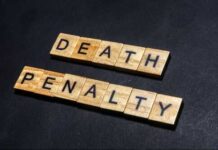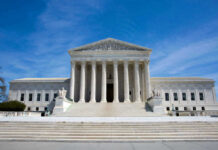
After 84 years, American hero Navy Fireman 1st Class Edward D. Bowden finally receives the honor and recognition he deserves, proving our nation never abandons those who sacrificed everything for freedom.
Story Highlights
- Navy Fireman 1st Class Edward D. Bowden, 29, from North Carolina identified after 84 years.
- Advanced DNA technology and dedicated military scientists made identification possible.
- Bowden served aboard USS California when Japanese forces attacked Pearl Harbor.
- Will receive full military honors at Arlington National Cemetery burial.
Pearl Harbor Hero Finally Identified Through Modern Science
The Defense POW/MIA Accounting Agency announced that Navy Fireman 1st Class Edward D. Bowden of New Bern, North Carolina, has been positively identified through advanced scientific methods.
Bowden was 29 years old when he made the ultimate sacrifice aboard the USS California during the December 7, 1941 Pearl Harbor attack. The identification, officially recorded as of April 1, represents a monumental achievement in honoring America’s fallen warriors and demonstrates our unwavering commitment to bringing every hero home.
Remains of man killed during Pearl Harbor attack identified. https://t.co/u7ZbDMWRhR
— NBC News (@NBCNews) October 6, 2025
USS California Suffered Devastating Losses During Attack
The USS California, stationed at Ford Island, Pearl Harbor, endured a brutal assault from Japanese aircraft that December morning. Multiple torpedoes and bombs struck the battleship, igniting fires and ultimately causing it to sink.
The attack claimed 102 brave crew members aboard the California, with only 43 identified immediately following the devastating assault. Bowden was among the 59 sailors whose identities remained unknown for over eight decades, their sacrifice acknowledged but their individual stories lost to time.
Decades-Long Recovery and Identification Efforts
Navy personnel collected the remains of fallen sailors from December 1941 through April 1942, initially interring them at Halawa and Nu’uanu Cemeteries. Five years later, the American Graves Registration Service disinterred the bodies and transported them to the Central Identification Laboratory at Schofield Barracks, Hawaii.
Despite their best efforts using 1940s technology, AGRS identified only 39 USS California crew members in 1947. The remaining unidentified remains were buried at the National Memorial Cemetery of the Pacific, known as Punchbowl, in Honolulu.
Military officials classified Bowden’s remains as non-recoverable on April 26, 1949, a designation that would stand for nearly 70 years. This classification reflected the technological limitations of the era, not any lack of dedication to honoring fallen service members.
Advanced Technology Brings Closure to Families
The breakthrough came in 2018 when DPAA exhumed all remaining unidentified USS California crew members from Punchbowl for advanced analysis. Scientists employed dental and anthropological analysis alongside circumstantial evidence to narrow their investigation.
The Armed Forces Medical Examiner System utilized cutting-edge mitochondrial DNA analysis and mitochondrial genome sequencing to definitively confirm Bowden’s identity. This scientific approach represents the gold standard in forensic identification, ensuring absolute certainty for grieving families.
Bowden’s family recently received notification of the positive identification, bringing closure after more than eight decades of uncertainty. He will receive full military honors during his burial at Arlington National Cemetery on Wednesday, finally receiving the individual recognition his sacrifice earned.
Honoring the Sacrifice of America’s Greatest Generation
Bowden’s name appears on the Walls of the Missing at Punchbowl alongside other World War II heroes whose remains were unidentified. Military officials will place a rosette next to his name, indicating successful identification and proper burial.
This symbol represents not just bureaucratic completion, but the fulfillment of America’s sacred promise to never forget those who died defending liberty.
The identification demonstrates how modern leadership prioritizes honoring military service members and supporting their families through advanced scientific capabilities and unwavering dedication.















